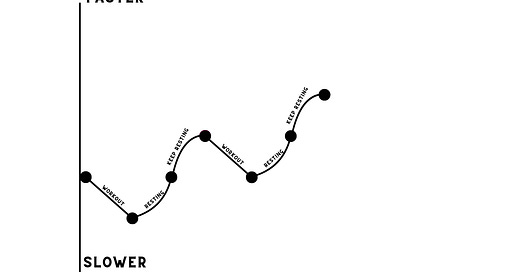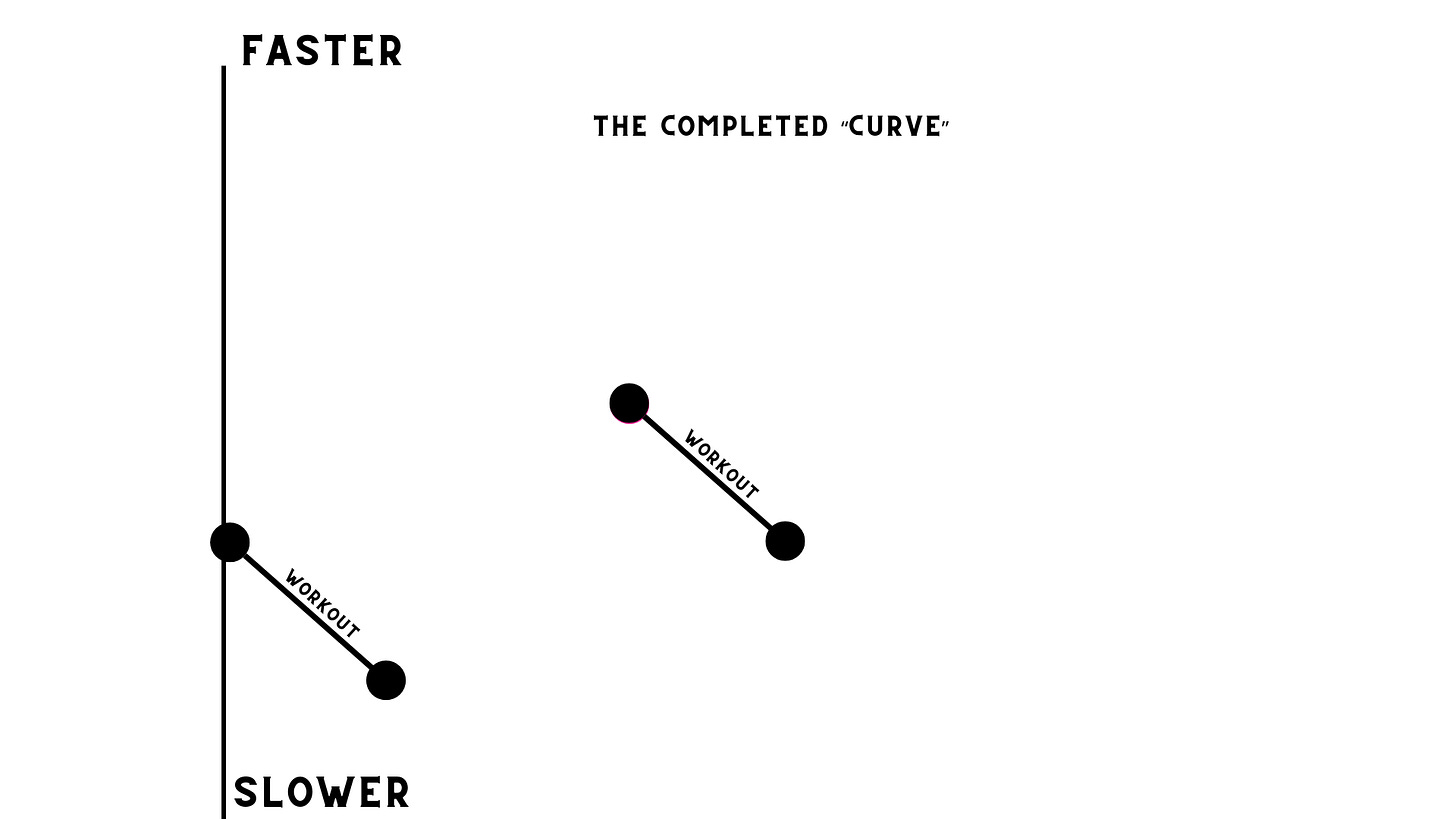As with all things you want to get better at, reflection is a key component of endurance training. We need to do this at all levels of periodization (the day, the week, the month, the year), but the most common format for my coaching is to review the week. First let’s talk a little about the theory, and then we’ll get into how to actually review a week.
Training Theory
As you learned in the Brick Wall post, the body needs cycles of both stress (training) and rest (not-training or easy training) in order to adapt to training. Often this cycle will happen several times within a training week.
Additionally from the Brick Wall, we know that getting extremely tired isn’t usually a good way to train (OTS, NFOR, and even FOR).
Thus, it makes sense that on a given day some workouts are going to be more useful at promoting that cycle of training stress and rebuild, and some workouts are going to be less useful at promoting that cycle. Already tired? Then getting more tired isn’t super useful. Resting when you’re tired? Super useful.
The goal of the week is to have the most useful workouts.
When I’m reviewing a week of training, I’m looking for three different kinds of cycles:
The Planned Cycles
The Completed Cycles
The Actual Cycles
The Planned Cycles:
A training plan is a guess as to how your body will react throughout a week. It’s hopefully an educated guess, based on your reactions to previous workouts, but we can’t possibly know the future, so it’s still a guess.
The Completed Cycles:
Now here’s where things get a little tricky! The data from your watch or cycling computer can only tell us ONE part of each completed cycle.
Because that data starts when the workout starts, and ends when that workout ends, it can’t possibly tell us anything about how your body handled the workout, how tired it made you, or how long it will take you to recover.
In a perfect world, sure, the amount of quantifiable workload (hours X intensity, calories, kilojoules, etc) will correlate really well with fatigue and recovery, but in real life it often doesn’t work that well.
In order to start to piece together whether the week was a useful one, we need to know more about how the body reacted between the workouts.
The Actual Cycles:
While there are ways to quantitatively analyze how the body is responding to training, they tend to live in two camps: 1) Inexpensive and non-invasive but unreliable (HRV, RHR), and 2) Expensive and invasive (muscle biopsies, blood markers). Thus the most effective option for the most people is subjective measurements, or comments on your workouts. Comments that discuss how your legs felt, how your sleep was, how your mood was, what you ate before and during the workout, etc., will go a long way to helping us piece together the data in between the workouts so that we can start to see the actual cycles of stress and recovery.
Once we have that data (the Planned workouts, the Completed workouts, and the Comments/Actual), then we can compare them to each other and learn some things.
Did the Planned and Completed and Comments all match? In other words, all workouts were done on the planned day, and the athlete felt good on the hard days, and a little tired on the easy days? This is the coaches goal, but for some athletes with busy lives, this might only happen 50% of the time.
Did the Completed and Comments match, but they didn’t follow the plan? In other words, the workouts happened on days that weren’t on the plan, but the athlete felt good on the hard days, and a little tired on the easy days. Completed matching comments is the athletes goal, regardless of the plan! This shows that you are listening to your body and reacting to reality, instead of blindly following last week’s guess.
Did nothing match? Planned and Completed didn’t match, and Actual didn’t either? Workouts were done on unplanned days and the athlete didn’t feel very good on hard days or very tired on easy days?
The goal for the athlete is not to follow the plan, but to follow their body’s recovery.
It’s the goal of the coach to match the plan to the athlete’s recovery.
Application
When I’m reviewing a week, first and foremost I’m looking to make sure that any output metrics (pace, power) planned on key workouts were hit and at the right effort. If they were, then by definition that means that the Completed cycles matched the Actual cycles! If you’re feeling pretty good on the hard days, chances are that you’re recovering well between efforts, and the cycles are going well.
If the athlete didn’t hit the goals of the workout, then the athlete didn’t adjust properly. They should have realized they were tired and pushed the workout back.
Second I’m looking at the comments in those workouts.
If the athlete hit the goals of the workout, but was clearly tired and had to go too hard to hit the metrics, then the athlete didn’t adjust properly. They should have realized they were tired and pushed the workout back.
If there aren’t any output metrics to hit, then I’m going to look at the HR graph to make sure that the athlete executed the framework of the workout correctly (roughly correct intervals length, good warmup and cooldown), and then look at the comments.
If the athlete didn’t complete the planned workout (HR graph looks totally different from planned), or says things like “tired,” or “bad,” then the athlete didn’t adjust properly. They should have realized they were tired and pushed the workout back.
If the athlete was too tired to hit the workout well on the planned day, I’m going to then look at two things: First, did the athlete add unplanned stress to the week. Did they go too hard on the easy days? Did they go out drinking with the girls? If the easy workouts look good and none of the comments mention external stresses, then I’m going to look secondly at my planning. If the athlete followed the plan and managed the external factors well, and was still too tired for the workout, then it means my plan was too hard.
What my review boils down to is this:
Did the athlete work hard to make the Completed and Actual cycles match the plan by managing stress outside of key workouts?
If the plan wasn’t right on the day, did they adjust?
An athlete is going to make good progress if they do their best to follow the plan and adjust the plan when they need to. You can’t have one without the other.
Note: If you’re a fairly new athlete, it’s best to focus on learning how to follow the plan pretty strictly. This is more about learning to hone your lifestyle around training, and once you’re pretty good at following a plan, then start worrying about making adjustments.
Questions?






